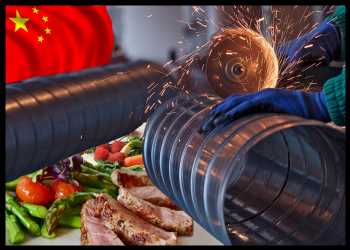
China Slips Into Deflation, Producer Prices Continue To Fall
China returned to deflation in October on falling food prices and producer prices continued to decline amid the renewed economic weakness, official data showed Thursday.
Consumer prices dropped 0.2 percent in October from a year ago after staying flat in September, figures from the National Bureau of Statistics revealed. The rate matched expectations.
Inflation had turned negative in July and stayed near zero in subsequent months, while Beijing aims to keep inflation around 3 percent in the whole year of 2023.
Core inflation, which excludes prices of food and energy, eased to 0.6 percent from 0.8 percent in September.
Food prices declined 4.0 percent from a year ago, while non-food prices gained 0.7 percent.
The month-on-month fall in overall consumer prices was 0.1 percent compared to an increase of 0.2 percent in September.
Producer prices declined 2.6 percent annually in October, following a fall of 2.5 percent in September. Prices were forecast to drop 2.8 percent. Prices have been declining over the last 13 months.
“China is not experiencing “deflation” as most headlines attest,” said ING economist Robert Carnell said. The decline in prices is mainly the result of a supply excess, rather than a collapse in demand.
Capital Economics’ economists said inflation looks set to remain low for the foreseeable future.
However, with policy support still on course to drive a modest recovery in growth over the coming quarters, an extended period of deflation is unlikely, they added.
The economy expanded 4.9 percent in the third quarter, suggesting that Beijing is all set to achieve its around 5 percent growth target this year.
This week, the International Monetary Fund upgraded China’s growth outlook for this year to 5.4 percent citing a stronger-than-expected Q3 outturn and recent policy announcements. GDP growth is seen at 4.6 percent next year.
Source: Read Full Article